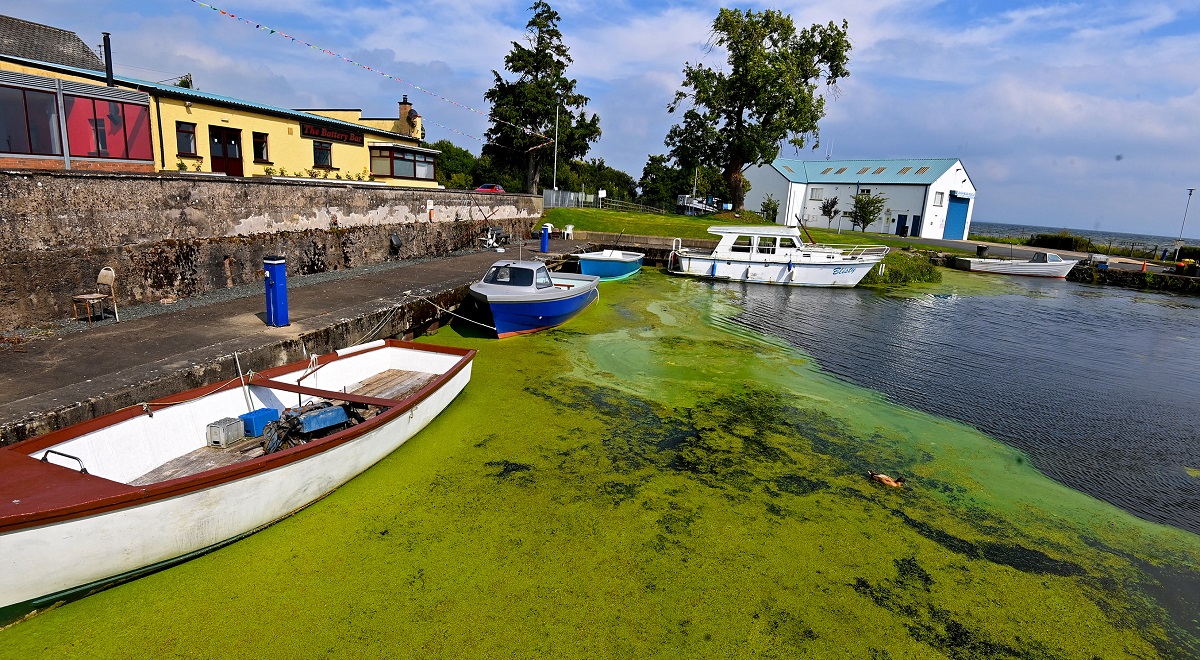IF dogs can die from swallowing it and people have become violently ill from ingesting small amounts of it, are we wise to assume that it is safe to eat fish that are caught from the blue-algae infested waters of Lough Neagh?
The implication of the most recent advice from both the Public Health Agency (PHA) and Food Standards Ageny (FSA) is, essentially, yes, fish from Lough Neagh are more or less safe to eat.
However, in the absence of a validated means of testing the levels cynatoxins (the most harmful chemical produced by blue-green algae) in the fish caught, many remain sceptical.
The FSA, however, have said they are sending samples of fish from Lough Neagh to England this week for invalidated, expedient, emergency testing.
The scale and severity of the unfolding ecological disaster that is Lough Neagh has become undeniable in recent months.
Since the start of summer, the world has come to learn what those closely connected with Lough Neagh have understood for years: Over-nutrification, chiefly brought about by sewage discharge and agricultural run-off, is, essentially, poisoning Northern Ireland’s primary source of drinking water.
In fact, the Public Health Agency was so concerned it advised people not to eat fish caught from Lough Neagh.
Recently, however, in a change that has been widely criticised as ‘nonsensical’, the PHA amended their public advice to say people should not eat fish from Lough Neagh that have been caught recreationally, but are okay to consume fish obtained from the same body of water so long as they are caught by commercial fisheries.
The FSA are offering virtually identical advice.
Amidst widespread criticism of the ostensibly artificial difference being made between fish caught recreationally and commercially, Andy Cole, FSA Director in NI, outlined the rationale behind his organisation’s position.
“There have been no reports of people becoming unwell from eating fish caught from waters affected by blue-green algal blooms,” began Mr Cole.
“People can continue to eat fish produced by fisheries from Lough Neagh, because commercial fisheries must make sure they have adequate safety controls in place to ensure the fish they place on the market is safe to eat.
“As a precaution, we are advising recreational anglers not to eat any fish from any waters affected by blue-green algal blooms. This is because, unlike commercial fisheries, there’s an increased risk associated with the personal handling and evisceration of parts of the fish where toxins can accumulate.”
Many, however, remain unsatisfied.
Mark Tierney, an influential figure within the Ulster Angling Federation and member of Camowen Community Anglers Association, told the TyroneHerald, “Our advice to anglers is do not eat any fish caught in Lough Neagh and be very cautious about eating fish caught in rivers around it.
“Once a fish leaves Lough Neagh, it does not leave every trace of cynatoxins behind it.
“Personally, I do not think anybody should be eating any fish coming out of Lough Neagh until we know more about the levels of toxins being carried by the fish.
“This seems like the sort of common sense, precautionary advice that should be coming from the PHA and PFA, but their reluctance to say so suggests to me that they are afraid of upsetting the big players in the commercial fishing industry.”
Also speaking with this newspaper, Gary Houston, chairman of Ulster Angling Federation, said, “There has been a lot of mixed messaging and positon shifting from the PHA and PFA.
“I met with the FSA’s Head of UK and International Affairs, Anjali Juneja the other day and she said there are no validated means of testing the levels of cynatoxins in the fish, so they are putting the responsibility of ensuring the fish are safe in the hands of the food business operators (company under whose name pre-packaged foods are marketed and/or sold).”
Mr Houston said that talks about developing a test are gaining momentum, but that it may take years before one is developed, tested and validated.







